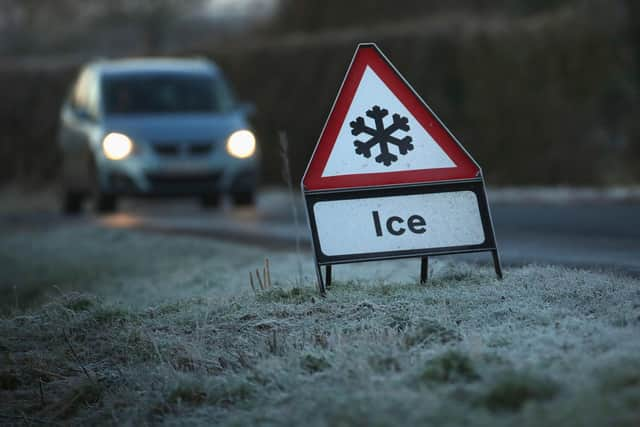Winter driving laws motorists might not realise they are breaking - and the fines drivers could face
This article contains affiliate links. We may earn a small commission on items purchased through this article, but that does not affect our editorial judgement.
and live on Freeview channel 276
Not only do wintery temperatures make driving conditions more difficult, but it can also lead to unsafe vehicles and habits.
There are simple laws which need to be adhered to, otherwise drivers could unknowingly risk fines and penalty points on their licence.
Here is a list of winter driving laws to keep in mind:


Driving with a clear windscreen, lights and mirrors
Advertisement
Hide AdAdvertisement
Hide AdMotorists driving in adverse weather conditions need to make sure they can see easily.
According to rule 229 of the highway code, every glass panel of a vehicle – including windscreens and mirrors – need to be completely cleared.
Experts from the RAC said it is a legal requirement to have a clear view of the road ahead before setting off, citing section 41D of the Road Traffic Act 1988.
Failure to do so could result in a £60 fine and three points on your driving licence.
Advertisement
Hide AdAdvertisement
Hide AdThis includes have unobstructed lights, mirrors and windscreens.
They advise you to de-ice your car properly before setting off.
Clearing snow off the roof of your car
If the weather turns for the worse, motorists need to make sure they clear all the snow off the roof of their car.
It is not an offence in itself, but experts from the RAC said this could lead to other driving offences if snow causes an obstruction, or falls into the path of another vehicle.
Advertisement
Hide AdAdvertisement
Hide AdThese offences include ‘driving without due consideration’, or ‘using a motor vehicle in a dangerous condition', which could lead to between three and nine penalty points.
The RAC said on its website: ‘Even if you’re only making a two-minute journey, by not thoroughly cleaning your car of snow, ice or condensation – including all windows, lights and even anything that could fall off into the path of another motorists – you’re breaking the law and leaving yourself liable to a run in with the police.’
Making your registration plate visible
Motorists who set off with an obscured registration number could face significant fines.
All frost, ice, snow or dirt needs to be cleared from the plate before setting off.
Advertisement
Hide AdAdvertisement
Hide AdInsurance experts at leasecar.uk said: ‘It is a crime to block your number plate with something that can impact its visibility towards other drivers, ANPR cameras and the police.
‘However, it is also an offence if your number plate is blocked by either dirt or snow.
‘The penalty for this can be anything up to £1,000.’
Leaving your car unattended with the engine running
Drivers might leave their vehicle with the engine running to clear their windscreen, but you need to make sure not to abandon your vehicle.
Leaving a vehicle with the engine running on public roads is known as idling.
SEE ALSO: M27 January Roadworks: List of closures near Fareham, Whiteley, Hedge End, Woolston, and Southampton
Advertisement
Hide AdAdvertisement
Hide AdThis does not apply to cars on private driveways, but the law is implemented on public roads.
Rule 123 of the Highway Code states: ‘You must not leave a parked vehicle unattended with the engine running or leave a vehicle engine running unnecessarily while that vehicle is stationary on a public road.’
Motorists can incur a £20 fine under the Road Traffic (Vehicle Emissions) Regulations 2002.
Fog lights
Fog warnings have been issued across Hampshire over the next two days.
Advertisement
Hide AdAdvertisement
Hide AdMotorists need to use their fog lights in the right conditions, otherwise it creates dangerous conditions for other road users.
Rule 236 of the Highway Code states: ‘You must not use front or rear fog lights unless visibility is seriously reduced as they dazzle other road users and can obscure your brake lights.
‘You must switch them off when visibility improves.’
Fog lights can legally be used when visibility is less than 100m in front of you.
No penalty points will be issued for breaking this rule, but fines are highly likely.
